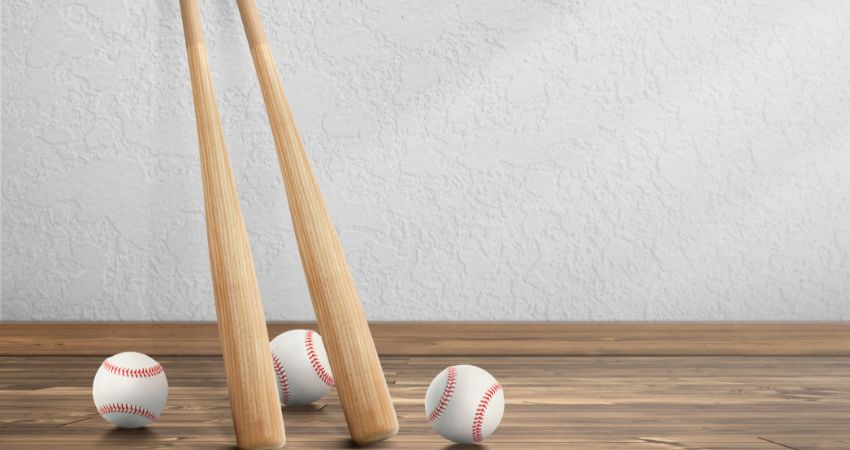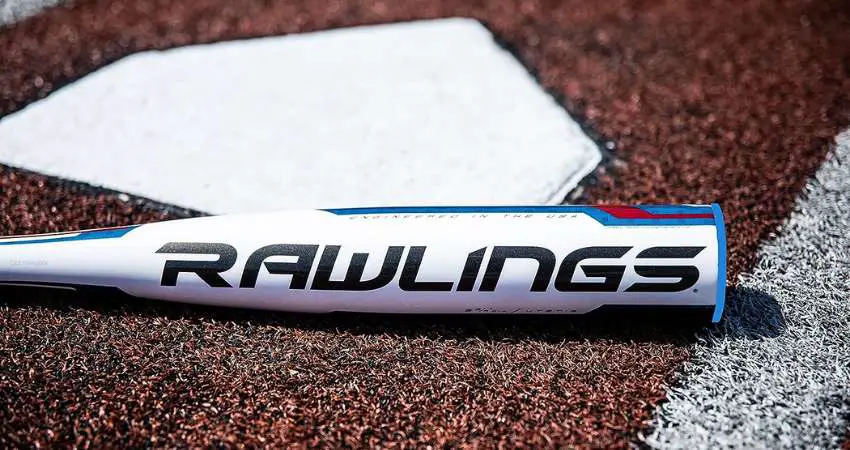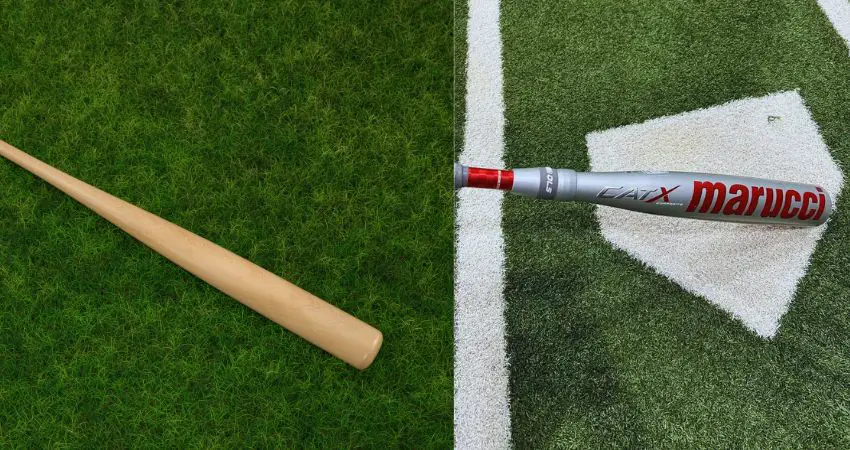One thing that I often get asked as a coach is which baseball bat is better. Should you go for a wooden bat? Or is a composite baseball bat a better choice?
If you ask around, you’ll get varied opinions on the subject, which can further complicate things for you. While there are many, who swear by wooden baseball bats, fans of composite bats will tell you that wooden bats are better left to the pros. So, which side is right here?
Well, if I were to give you a quick answer, I would say that both bats have their place. Yes, composite bats are easier to swing and let you drive the ball further, but if you want to go pro, wooden bats are the only ones allowed in the MLB.
Of course, that’s just barely scratching the surface when it comes to the differences between the two bat types. And if you’re like me, you’re not here for the short answers.
So, let me take you down the rabbit hole and give you a thorough comparison between wood vs composite baseball bats to help you figure out which one you want for the coming season. Let’s get started.

Table of Contents
What are Wood Baseball Bats
Wooden baseball bats are, as the name suggests, made of wood. However, not all wood bats are made of the same wood. Depending on its price range or the manufacturer, the wood used to make the baseball bat can vary.

The most common types of wood to manufacture wooden baseball bats are Birch, Ash, and Maple. These are the wood types that the MLB allows in professional games. However, for casual play, there are bats available that are made of different types of wood.
The main advantage of a wooden baseball bat is it’s pretty inexpensive. Even a high-end wooden bat shouldn’t cost you too much. But the downside to this type of bat is that they break easily and require a bit more skill to swing properly.
What are Composite Baseball Bats
Composite baseball bats, on the other hand, are made of carbon composite materials. These bats are a relatively recent innovation compared to metal or wood baseball bats. Because of their construction and design, these bats tend to be quite pricey.

However, what makes them good is that they are extremely lightweight and offer you a greater sweet spot than any other type of baseball bat. As a result, even if you’re a beginner, you’ll be able to get a decent game experience with one that you just picked up.
Of course, the price is the major downside to composite baseball bats. But another complaint people have with this type of bat is their relatively long break-in period. A typical composite bat takes about 250 to 300 swings to break in properly.
Key Differences Between Wood vs. Composite Baseball Bats
Now that I’ve given you a brief overview of the two types of baseball bats, you should already start to see the bigger picture. When you dig into the differences, you’ll start to notice many of them between a wood and a composite bat.
Here’s a quick chart if you’re short on time. But it’s one of those things where a chart doesn’t really paint the whole picture. So, I would suggest reading the article to the end to understand all the major differences.
| Key Differences | Wood Baseball Bat | Composite Baseball Bat |
| Durability | Not very durable | Extremely durable |
| Swing Speed | Slow | Fast |
| Sweet Spot Size | Small | Large |
| Contact Strength | Low | High |
| Break in Period | Little break in | Little break-in |
| Bat Response | Little break-in | Better than Wood Bats |
| Weight | Heavy | Lightweight |
| Affordability | Affordable | Expensive |
| MLB Choice | ü | û |

Durability
Durability is a huge deal when it comes to baseball bats. I mean, I’m sure you’ve seen MLB games. You’ve seen how many bats the Pros break each game. Well, all those bats are made of wood. And needless to say, they don’t last very long. That’s one o the biggest issue people have with wooden baseball bats.
Now, for a professional player breaking a bat isn’t a big deal. He breaks one, and the manufacturer just sends over another one for free. But for a player paying for his gears out of his own pockets, that’s not really a luxury that you can afford. If you play in smaller leagues, I’m sure you want to make sure your bat lasts as long as it can.
That’s exactly where composite baseball bats shine. Since they are made of carbon composites and often feature a blend of two or more different materials, they don’t break as easily as wooden baseball bats. In most cases, they are even stronger than alloy bats.
Winner: Composite baseball bats
Swing Speed
Swing speed refers to how easily you can swing the bat when you’re aiming for the baseball. Why does it matter? Well, if you can’t swing your bat easily, you’ll have a harder time making a good connection with the ball with your bat. With a faster swing speed making a solid contact with the ball becomes easier.

But swing speed is not the be-all, end-all when it comes to baseball bats. Some players, in fact, prefer using a bat that’s heavier and has a slower swing speed. With a heavier bat, it’s easier to transfer more energy behind your swing. So, on a connection, the ball goes flying to the stands.
With that out of the way, a wood bat has a slower swing speed than a composite bat. So, if you want to stay light and flexible with your baseball bat, a bat made of composite materials might be the better choice. Again, people have varied preferences here, so it’s entirely up to you which one you want to go with here.
Winner: Composite baseball bats
Break in Period
Baseball gloves need to go through a break-in period; that much is common knowledge. But what many people don’t realize is that there’s a break-in period for some baseball bats too.
With wooden bats, though, the break-in period is practically non-existent. You can buy a bat and head straight to your game with it without any issues at all. The bat will perform well, and as long as you can manage to hit the ball properly, you’ll get all the power you need out of it.
This is when composite bat lags behind their wooden counterparts. Most composite bats have a long break-in period of around 250 to 300 swings. So that means, realistically, you need to spend about a week with your bat hitting balls in the batting cage before you can get it to its peak performance.
Winner: Wooden baseball bats
Sweet Spot Size
The sweet spot refers to the section of the bat that gives you the most hitting power on a successful hit. Now sweet spot isn’t essential for a baseball bat to be good, but for a beginner, it does come in handy. But relying on it too much can do more harm than good if you ask me.

Anyways, wooden baseball bats have a pretty small sweet spot. That means if you want to hit a home run, then you need to make a solid connection with the ball and have a decent bit of strength behind your swing. Otherwise, the ball won’t travel too far when you hit it.
A big benefit of a composite bat is that it comes with a large sweet spot. So, getting a good hit off with it is pretty easy, even for a newcomer to the sport. You still need practice to develop your hand-eye coordination; there’s no way around that, but hitting well with a composite bat is much easier with a composite bat.
Winner: Composite baseball bats
Bat Response
Don’t make the mistake of confusing the responsiveness of a baseball bat with its weight. While the weight of the bat, or how fast you can swing it, does matter, the responsiveness of the bat is another important element that you should always think about when you’re getting a new one.
The response of the bat refers to the vibration you feel in your hands when you make a connection with the ball. And with wooden bats, the responsiveness is the best there is.
Now the responsiveness of a composite bat isn’t bad at all. In fact, compared to an alloy baseball bat, it’s amazing. But there’s just something about wooden bats that just can’t be replicated with any other material.
So, here again, a wooden baseball bat wins the duel.
Winner: Wooden baseball bats
Contact Strength
The contact strength of the bat plays a huge role in dictating your overall experience with it. If the contact strength of the bat is good, it will do most of the heavy lifting. What that means is hitting a home run with it would be much easier than normal.

Now composite baseball bats are the king when it comes to contact strength. Hitting a home run with it is much easier, thanks to its larger sweet spot and barrel flex. That’s why even a newcomer with some practice can consistently drive the ball to the stands with a composite bat.
But that doesn’t mean wooden baseball bats don’t have decent contact strength. On the contrary, when a pro picks up a wooden bat, you won’t notice any lacking in terms of raw hitting power. But for a beginner, tapping into the contact strength of a wooden bat is more difficult and requires more practice.
Winner: Composite baseball bats
Weight
The weight of a bat dictates both its swing speed and ease of use. A heavier bat will be harder to swing, naturally, and a beginner player will have a harder time wielding it properly. So, youth players and beginners tend to favor a lighter bat most of the time.
If you take a wooden baseball bat with one hand and pick up a composite bat with another hand, you’ll see that wooden bats are noticeably heavier. Of course, there are lightweight wooden bats out there, too, that contact hitters prefer, but in most cases, a composite bat would be the lighter one of the two.
Winner: Composite baseball bats
· Affordability
If your budget is tight, and you want to pick up a decent baseball bat for cheap, then I’m sure you’re wondering which type of baseball bat is more expensive. Now, keep in mind both wooden bats and composite bats are available in different price ranges.
Just like how there are cheap composite baseball bats, an MLB-level wooden bat will easily cost you a fair bit of money. But generally speaking, wooden bats are the more affordable of the two bat types.
Then again, composite baseball bats, since they last longer, might give you a better value in the long run. It entirely comes down to how much you are willing to pay upfront for a high-quality baseball bat.
Winner: Wooden baseball bats
Are Composite Bats Better than Wood Bats?
At first glance, it might seem that composite bats are better than wooden baseball bats. And since they bring many technologies and design improvements to the table, it would be true to some extent.
But the thing is, people have varied preferences. If you ask an MLB pro about his favorite baseball bat, he will most likely point you toward a wooden bat. Composite bats aren’t really the “Pro-Choice.”
Then again, as a casual player who is just starting out, composite bats will certainly give you a better experience. It will last longer and also make it easier for you to learn the intricacies of being a hitter. So, if you’re a beginner looking for the best youth baseball bat, you might end up with a composite bat.
I hope my in-depth comparison between wood and composite baseball bats can help you understand what sets the two apart. Good luck!
